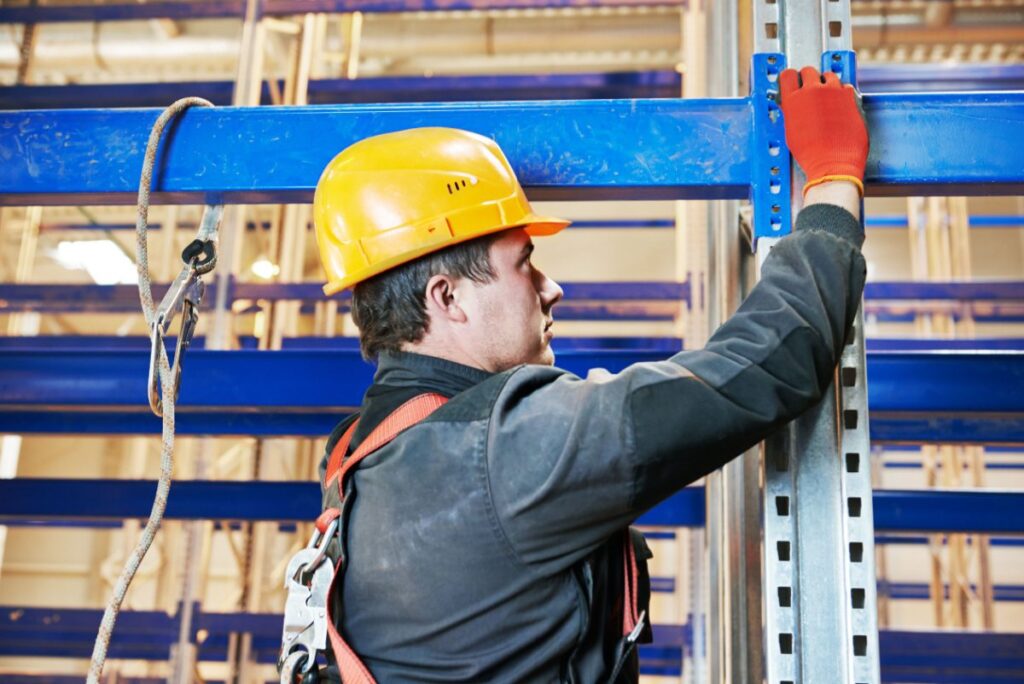Pallet racking systems are an integral part of warehouse storage and operations. These systems maximize vertical space, efficiently organize inventory, and support heavy loads in a variety of storage areas. But, just like all pieces of equipment, pallet racks require frequently scheduled maintenance as a result of wear and tear over time, or from incidents within the warehouse such as forklift collisions. Effective maintenance practices can help improve warehouse safety and increase productivity. In this article, we will explore the best methods for repairing your pallet racking systems.
Repairing pallet racks is essential for maintaining the safety and functionality of your system. Below are the best practices for repairing different types of pallet rack damage:
1. Assess the Damage
Before attempting any repairs, it’s crucial to conduct a thorough inspection of the racks. The following areas should be checked:
- Uprights: Look for bends, cracks, or rust.
- Beams: Check for deformation, cracking, or missing safety pins.
- Decking and Wire Mesh: Inspect for signs of corrosion or breakage.
- Anchorage: Ensure the base of the uprights is properly secured to the floor.
2. Repairing Damaged Uprights
The upright posts are the backbone of the racking system, so any damage to them should be taken seriously. Common types of damage include dents, bends, or cracks, which can compromise the load-bearing capacity.
- Small Dents and Bends: Minor dents or bends in the upright can sometimes be repaired by using specialized tools, such as hydraulic jacks or bending equipment, to straighten the post. This should only be done if the rack’s structural integrity is not compromised.
- Cracks or Severe Damage: If the upright is cracked, it’s generally recommended to replace it entirely. Cracks weaken the structure and can be a significant safety hazard. In some cases, you may be able to install a “repair sleeve”—a steel reinforcement that is a temporary fix that wraps around the damaged section of the upright to restore strength.
3. Fixing Damaged Beams
Beams can become damaged due to excessive weight, forklift impacts, or general misuse. Here’s how to address these issues:
- Bent Beams: If the beams are slightly bent, they may be able to be straightened using a hydraulic press or beam bender. However, if the bend is severe, it’s safer to replace the beam entirely.
- Cracked or Broken Beams: If a beam has cracked or is showing signs of weakness, it should be replaced immediately. Never attempt to repair a cracked beam, as doing so can compromise the safety of the entire system.
4. Repairing the Decking
Decking (also known as shelf boards or panels) can become damaged from the weight of goods, improper loading, or forklift impact. Here’s how to address the most common issues:
- Wire Decking: If your pallet racks use wire decking, check for bent or broken wires. Minor bends can sometimes be straightened, but broken or severely damaged sections should be replaced to avoid accidents.
- Wooden or Steel Decking: If using wood or steel decking, replace any planks that have cracked or warped. Ensure that the replacement material matches the original specifications for load-bearing capacity.
5. Use of Rack Repair Kits
Many manufacturers and distributors (like Diversified Rack and Shelving!) sell specialized pallet rack repair kits designed for quick and easy repairs. These kits typically include repair sleeves, braces, and connectors to restore the strength of damaged racks without requiring full replacements.
Pallet rack repairs are crucial to maintaining a safe, efficient, and long-lasting warehouse environment. By conducting regular inspections, using the right repair methods, and utilizing rack repair kits if needed, you can extend the life of your racking system while ensuring a safe workplace for all employees. Here at Diversified Rack and Shelving, we employ a team of experts who are ready to help you assess and fix the damage in your warehouse today. Contact us today to start discussing solutions that will better the safety and operations of your warehouse today!

